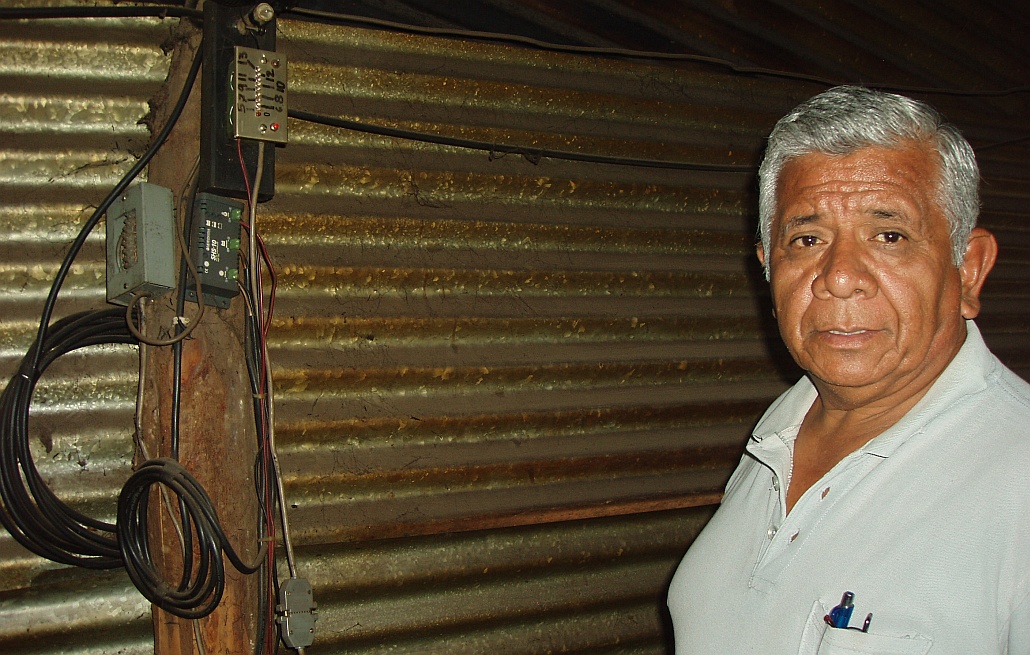Triple Objectives: Sustainable Development, Climate Change Mitigation, and Climate Change Adaptation
Rural communities throughout Latin America are increasingly suffering the impacts of climate change and few policies exist to help them adapt to these impacts. The basic infrastructure and services that they frequently lack can be provided by low carbon technologies, potentially funded by international carbon finance flows. This could enable the upcoming Sustainable Development Goals of economic growth and poverty alleviation to be met while simultaneously minimizing carbon emissions and increasing their resilience towards climate change impacts. My research examined the relationships between sustainable development, climate change and renewable energy in rural Central America.
A Triple Objectives Approach
The Question: ‘Can rural renewable energy projects simultaneously meet the multiple goals of sustainable development, climate change mitigation and climate change adaptation? If so, under what conditions?'
- How well are projects meeting their goals of sustainable development, climate change mitigation and climate change adaptation?
- What are the relative roles of local historical background and physical characteristics, type of community governance, and funding source and project implementation process in the success of projects in meeting adaptation, mitigation and development goals?
- What are the challenges in integrating development and climate change adaptation policies in rural Central America? How might the evolving international climate regime contribute to this integration?
I used the political ecology approach to assess the importance of, and relationships between, political economy, social and community structures, local historical backgrounds and the use of natural resources. The approach provides a useful framework for evaluating rural renewable energy projects, focusing on institutions (such as common property resources), markets, local response to development interventions and to the material effects of development on the physical environment (for example, water, soil, and carbon). Political ecology was used as a framework to study the social, economic and political context under which, in particular, development and climate change projects take place.
Common Property / Common Pool Resources (CPR) were analyzed as an institution under political ecology, since all the development projects evaluated were community owned. I also used the Pressure and Release (PAR) model for the analysis of renewable energy systems meeting climate change adaptation goals.
I assessed fifteen community-owned renewable energy projects in Guatemala and Nicaragua to analyze whether current renewable energy projects are achieving these goals in an integrated way. The projects were established primarily from a development, emissions reductions, climate change adaptation and/or disaster relief perspective. The projects were evaluated on economic, developmental and climate change indicators, which included indicators focusing on sustainable development, poverty alleviation, emissions reductions, and climate vulnerability. I examined how the type of common property governance, local historical and environmental background and project implementation process influenced the project success in meeting multiple objectives of climate adaptation, mitigation and development. Research methods included participatory poverty assessment techniques, semi-structured interviews, stakeholder analysis, and a combination of rapid and participatory methods. The analysis of sustainable development and vulnerability used Sustainable Livelihoods Approach methodologies and emissions reductions were calculated using standard carbon reduction methodologies.

Trainer of the 'Comisión de Reducción de Desastres (CONRED)' explaining the photovoltaic charge controller that is part of an early warning system in the Coyolate River Watershed, Guatemala.
Meeting the Triple Objectives
The results show that, under certain conditions, renewable energy projects can simultaneously meet these three objectives, and thus that responses to climate change mitigation and adaptation can be integrated with poverty alleviation and sustainable development. Small scale hydroelectric and solar systems can reduce emissions, enable adaptation and help local livelihoods although there are numerous problems that limit the success of projects including poor design, inequitable distribution of benefits, negative user perceptions, and poorly designed governance and maintenance structures.
The research case studies demonstrate that, under certain circumstances and design considerations, it is possible to meet triple objectives. One of the cases studied did indeed meet its triple objectives. Although the design of some case study projects did not allow for the triple objectives to be currently met, this does not preclude the projects from meeting it in the future. Indeed, some decentralized renewable energy (DRE) projects can be more robust, and some have already been rebuilt after specific extreme weather events, such as a small-scale hydroelectric plant in Guatemala after Hurricanes Mitch and Stan. As was seen throughout this dissertation, a number of factors played a role in the projects meeting their own stated goals.
Conditions, Circumstances and Considerations
One case study shows that triple objectives can be met. A Guatemalan community has significantly reduced greenhouse gas emissions, improved the quality of life of all the families and was able to survive the aftermath of Hurricane Stan thanks to the use solar photovoltaics, micro-hydroelectric generation and biodiesel production.
Other projects could have met their triple objectives but failed as there was a lack of follow-up and monitoring on behalf off the donor/implementer. Amongst these projects, there are several characteristics that indicate triple objectives are possible:
- Communities in which adaptation goals are being met are communities in which, more often than not, development goals are also being met.
- Communities in which there is a governance structure, or some form of community participation, will be better able to cope with a natural disaster than one in which there isn't. Projects that are not communal since the planning phases will most likely not be able to meet their triple objectives.
- Sound technical designs and operation and maintenance protocols that follow safety and quality codes and standards enable reaching triple objectives.
- Socialization needs to be considered a two-way learning process: the community learns about the project and the means to achieve it, and the donor/developer learns about the community (needs, background, etc.).
- Follow-up and monitoring are essential.
Concluding
DRE systems have been seen to both increase and decrease vulnerability to extreme climate events. Policy makers and project developers have tended to view DRE systems as pertaining to the fields of poverty alleviation, mainly if they are small scale, and/or climate change mitigation, mainly if they are large scale. Vulnerable energy systems can pose direct and indirect harm to users and when not properly planned and/or designed. In general, the case studies helped identify the main vulnerabilities of DRE systems to extreme climate events.
The case studies also showed that communities in which adaptation goals are being met are communities in which, more often than not, development goals are also being achieved. Actions that enable adaptation also enable development, such as communications, alternate income sources and more community unity. However, the results of my research indicate that in most cases, adaptation to natural disasters is better in communities where there is a good governance structure and where the renewable energy system is commonly owned, applying principles derived from Ostrom's Common Property Resources.



